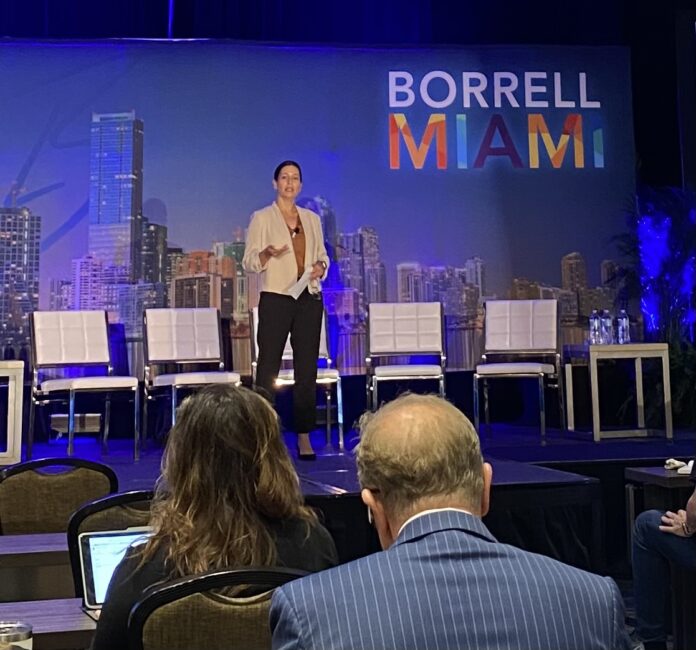MIAMI — Will growth be good in the year ahead, but see ad buyers and marketers developing contingency plans for a slowdown? Or are they confident in their outlook but cognizant of clouds on the economic horizon?
While the majority of Borrell Miami 2023 attendees polled are indeed prepping for a predicted slowdown, household finances, even with savings drawdown and increased credit card use, are good. And, while the labor market is tight, demand is strong.
Those are just some of the key economic indicators offered by the South Florida-based VP and Regional Executive of the Federal Reserve Bank of Atlanta.
“Inflation is moving in the right direction but not as fast as we want it to go, and there’s still a lot to go to get to that 2% target,” said Shari Bower, speaking in a Tuesday morning keynote to kick off the concluding day of the Borrell Miami 2023 conference.
Bower’s assessment — her own, and not that of the Fed, she noted — is based on what she is hearing from businesses across the Southeast in addition to data analysts are looking at nationally.
Are we in a recession? That’s a question Bower first sought to answer.
“The U.S. manufacturing sector has seen some contraction,” and that started in June 2021, Bower notes. That’s when savings drawdowns started, with a savings rate “falling significantly” in the last year.
Where are people spending? Services has been consistently going up. Goods? A significant pickup in January was seen after a slow end of 2022, Bower shared.
But, real wages are declining for most of the population, “which doesn’t bode well for inflation,” she added.
What is also a key factor are inflation expectations. “The Atlanta Fed’s business expectations survey show that expectations for inflation are actually trending down,” Bower said, noting that psychology plays a role in actual inflation. If people believe it is happening, their spending behaviors will be impacted, she explained.
Meanwhile, the gap in the labor force — labor demand vs. labor supply — is significant. “The labor shortfall has led to wage increases, which has made it harder to tackle inflation,” Bower said. And, the recovery of the workforce has been inconsistent across different demographic groups, she added. “The 55+ [group] has not recovered to pre-pandemic levels.” There are reasons for this, Bower said, ranging from savings and child-care costs to COVID-19 related concerns for not returning to work.
Yet, the biggest reason for this imbalance “actually appears to be aging.”
The 65+ and lack of growth in the 25-54 work force is straining the overall workforce, Bower revealed.
“We expected Baby Boomers to leave the workforce, but the retirement boom coupled with a shrinking population of prime-age workers has really fueled the imbalance,” she said.





